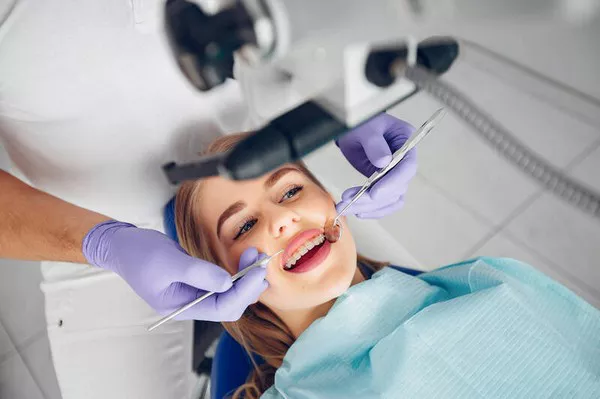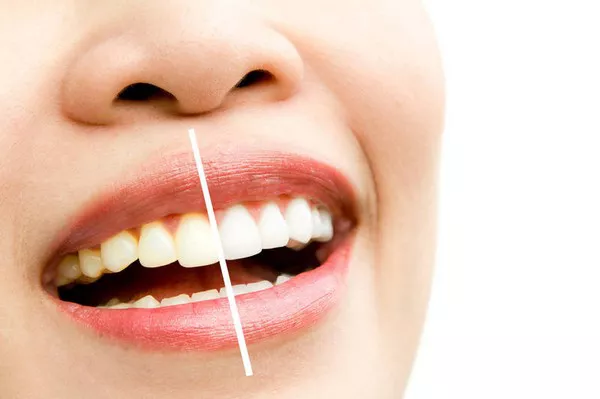In this article, we will explore the use of peroxide for teeth whitening, a popular and widely used method to achieve a brighter and more radiant smile. Peroxide-based teeth whitening products are commonly found in both over-the-counter and professional dental treatments. Understanding the science behind peroxide teeth whitening and its safety considerations will help individuals make informed decisions about their oral health and cosmetic dental treatments.
Understanding Peroxide Teeth Whitening:
Peroxide, specifically hydrogen peroxide and carbamide peroxide, is the active ingredient in most teeth whitening products. It works by breaking down and oxidizing the molecules that cause tooth discoloration and stains. The process involves two main steps:
Oxidation: Peroxide acts as an oxidizing agent, releasing oxygen molecules that penetrate the enamel (outer layer of the teeth) and dentin (inner layer of the teeth). This oxidation process breaks down the molecular bonds of the staining compounds, making them smaller and less concentrated, resulting in lighter and whiter teeth.
Removal of Stains: As the oxidation process continues, the smaller staining compounds are eventually eliminated from the tooth structure, leading to a visible improvement in tooth color.
Types of Peroxide Used in Teeth Whitening:
Hydrogen Peroxide: Hydrogen peroxide is a potent bleaching agent used in both professional and over-the-counter teeth whitening products. It is available in various concentrations, ranging from around 3% to 40%. Higher concentrations are used in professional dental treatments, while lower concentrations are found in at-home whitening kits.
Carbamide Peroxide: Carbamide peroxide is a stable compound that breaks down into hydrogen peroxide and urea when applied to the teeth. It is commonly used in at-home whitening kits due to its longer shelf life and lower risk of causing tooth sensitivity.
Types of Peroxide Teeth Whitening Products:
In-Office Teeth Whitening: Performed by dental professionals, in-office teeth whitening procedures use high-concentration hydrogen peroxide gels combined with light activation or laser technology to accelerate the whitening process.
At-Home Teeth Whitening Kits: At-home whitening kits typically contain low to moderate concentrations of carbamide peroxide gel. They include custom-fitted trays or strips that allow users to apply the gel directly to the teeth over a specified period.
Safety Considerations for Peroxide Teeth Whitening:
While peroxide teeth whitening is generally considered safe and effective, it is essential to consider the following safety precautions:
Tooth Sensitivity: Some individuals may experience temporary tooth sensitivity during or after teeth whitening. This sensitivity is usually mild and short-lived, but it can be managed with desensitizing toothpaste or gels.
Gum Irritation: Prolonged contact of the peroxide gel with the gums can lead to irritation and discomfort. Proper application of the whitening product and using custom-fitted trays can help minimize gum contact.
Dental Restorations: Teeth whitening treatments are not effective on dental restorations like crowns, veneers, or fillings. It may lead to uneven coloration if performed on teeth with existing restorations.
Overuse of Whitening Products: Excessive use of peroxide-based whitening products can lead to enamel erosion and tooth sensitivity. Following the recommended usage guidelines is crucial for maintaining oral health.
Consultation with Dental Professional: Before starting any teeth whitening treatment, it is essential to consult a dental professional to assess the suitability of the treatment and discuss any existing dental issues or concerns.
Conclusion:
Peroxide-based teeth whitening is a popular and effective method for achieving a brighter smile by breaking down staining compounds and removing tooth discoloration. Hydrogen peroxide and carbamide peroxide are the active ingredients in most teeth whitening products, available in varying concentrations for in-office and at-home treatments. While teeth whitening with peroxide is generally safe, some individuals may experience tooth sensitivity or gum irritation. Proper application and following the recommended usage guidelines are crucial for minimizing side effects and achieving optimal results. Consulting a dental professional before starting any teeth whitening treatment is essential to ensure suitability and address any concerns. With proper care and guidance from dental professionals, individuals can achieve a whiter and more confident smile through peroxide teeth whitening while maintaining excellent oral health.
Related Topics:





























